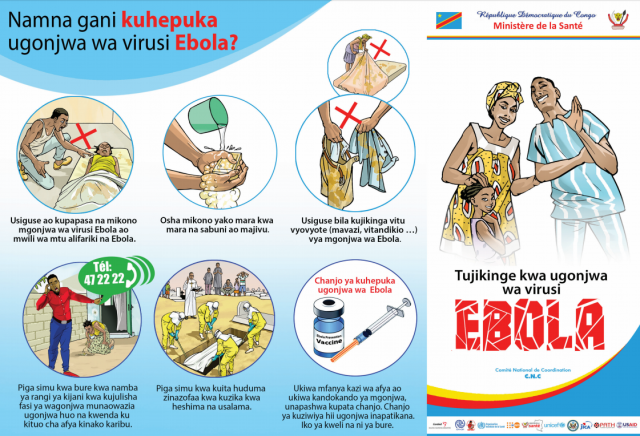Ebola: Première Urgence Internationale re-opens its base in Goma (DRC)
In February 2019, in response to the propagation of an Ebola virus disease (EVD) in the province of North Kivu, Première Urgence Internationale decided to re-open its base in Goma in order to prepare the arrival of a response team. Our enlightenment with Céline Morin, emergency operations manager at Première Urgence Internationale, back after one month in the field.
The epidemic treshold crossed for the tenth time in DRC: organizing response in Goma
In August 2018 was announced a new EVD epidemic in eastern Democratic Republic of the Congo (DRC). Since then, more than one thousand contaminations – confirmed and likely – have been reported by the World Health Organization (WHO) and the Congolese Health Department, including 629 deaths (1).
Goma, city of more than one million inhabitants and North Kivu’s capital, is still preserved from the virus. Regarding the risks, it has been declared “Ebola response area” by the national and UN healthcare authorities. In this framework, our teams implement a prevention and response project supported by the Office of Foreign Disaster Assistance.
“There is an emergency! If the EVD epidemic reaches Goma, the number of victims could increase very quickly. The healthcare facilities must be prepared and the personnel trained.” explains Céline Morin. No confirmed case has been detected so far but the authorities receive alerts on a daily basis. Indeed, EVD’s symptoms are similar to the ones of other epidemics striking the region, for instance cholera and paludism. The population is very worried.
Let’s recall no curative treatment is fully efficient. Hopefully, healthcare authorities rapidly launched a vaccination campaign for at-risk populations in the North Kivu. Vaccines are an important tool in the struggle against EVD. “Healthcare personnel was among the first ones to receive vaccination. Then, followed all the frontline workers, the contacts of the patients and the contacts of the contacts”.
In parallel, efforts have been made to break the disease transmission channel and limit its propagation. Thus, it is necessary to create a cordon sanitaire around Goma, namely in the health areas of Nyiragongo and Karisimbi.
How does a base opening take place ?
Céline Morin went to Goma in order to prepare the opening of our base in charge of the response project.
“This project will be carried out by a team composed of sixty persons, including only five expatriates. Due to an endemic unemployment in Goma, job applications were overwhelming. We received more than seven hundred candidate files in two weeks.“
Besides recruitment, logistics needs must be filled : finding a place to live, offices, storage spaces and vehicles. It is also necessary to establish relations with local authorities and to integrate coordination mechanisms which connect humanitarian actors to healthcare public actors. Such mechanisms facilitate information exchange, evaluation of needs and experience sharing.
EVD infection prevention and control : strenghtening about twenty healthcare facilities
The project we carry out in Goma, included in the response framework designed by the WHO and the Healthcare Department, has two aspects. On one hand, Première Urgence Internationale will support about twenty healthcare facilities dealing with EVD Infection Prevention and Control (IPC). On the other hand, our teams will reinforce response capacities among the communities.
Regarding support to healthcare facilities, it is materialized by personnel training, IPC kits and equipment provision, diffusion of health protocols, organization of sorting spaces and isolation rooms for suspected cases.
Involving local communities in the response: a major issue for healthcare actors
As for the community dimension, at the heart of the project’s success, it corresponds to sensitization strategies, prevention campaigns and a diffusion of good practices among the population through “community relays” from local social groups. Besides this dimension of sensitization, the objective is also to reassure the beneficiaries about our action.
“Caring confirmed cases can frighten if it is not explained enough to the populations within the intervention zones. Misunderstanding between local populations and humanitarian actors can sometimes lead to a certain distrust from the formers towards the latter. It is thus imperative that we adopt a pedagogical and explicative approach.” details Céline Morin.
It implies that we interact with different social actors and groups in order to understand – and not to push around – local dynamics. Accordingly, the concern is that humanitarian work is well perceived and accepted by the beneficiaries. It is the issue surrounding the notion of acceptance.
Première Urgence Internationale, which has been present in the country for seventeen years, has built relations of confidence with the local population. “People know us and look on our return in the region with a favorable eye”, concludes Céline Morin.
(1) Figures from WHO / DRC Healthcare Dept 03/24/2019


